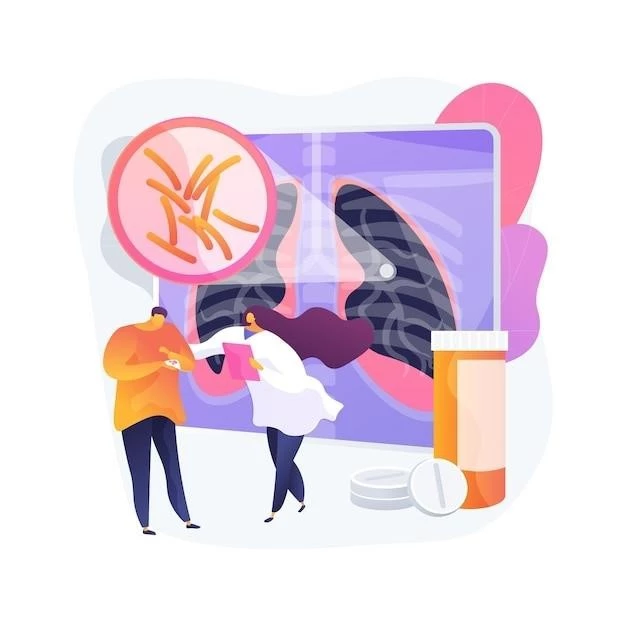Graphite Pneumoconiosis
Graphite pneumoconiosis is a lung disease caused by occupational exposure to graphite particles, leading to pulmonary fibrosis․ This article will explore the symptoms, impact on lung function, treatment options, public health implications, and more․
Introduction
Graphite pneumoconiosis, a form of pneumoconiosis, is a serious occupational lung disease caused by inhaling graphite dust․ Workers in industries like pencil manufacturing or mining are at risk․ The condition can lead to pulmonary fibrosis, chronic cough, and respiratory symptoms․ Understanding the impact of occupational exposure to graphite particles is crucial in preventing lung scarring and preserving lung function․ This article delves into the symptoms, diagnosis, treatment, and public health implications of graphite pneumoconiosis․
Understanding Pneumoconiosis
Pneumoconiosis refers to a group of lung diseases caused by inhalation of mineral dust particles, leading to lung scarring and impairment of lung function․ In the case of graphite pneumoconiosis, exposure to graphite particles in the workplace can result in the deposition of these particles in the lungs, triggering inflammation and fibrosis․ Over time, this can manifest as respiratory symptoms such as shortness of breath, chest pain, and a persistent cough․ Understanding the pathophysiology of pneumoconiosis is essential in recognizing the risks associated with occupational hazards and implementing preventive measures to minimize exposure to mineral dust․ By examining the mechanisms by which graphite particles interact with the respiratory system, researchers can develop strategies to mitigate the development of graphite pneumoconiosis and improve the overall lung health of workers exposed to this occupational hazard․
Graphite Particles and Occupational Hazard
Graphite particles, commonly found in industries like pencil manufacturing, can pose a significant occupational hazard to workers․ When these particles are inhaled, they can accumulate in the lungs, leading to inflammation and scarring over time․ Workers in graphite-related occupations are at risk of developing graphite pneumoconiosis, a type of pneumoconiosis characterized by the presence of graphite particles in lung tissue․ Understanding the specific risks associated with graphite exposure is crucial for employers and workers to implement appropriate safety measures and minimize the potential health consequences․ By raising awareness about the occupational hazards of graphite particles and promoting the use of protective equipment and proper ventilation systems, the incidence of graphite pneumoconiosis can be reduced, safeguarding the respiratory health of individuals in high-risk industries․
Symptoms and Diagnosis
The symptoms of graphite pneumoconiosis often include chronic cough, shortness of breath, chest pain, and fatigue․ These respiratory symptoms may worsen over time as lung scarring progresses․ Diagnosis typically involves a thorough medical history, physical examination, imaging studies such as chest X-rays or CT scans, and lung function tests to assess the extent of lung damage․ The presence of graphite particles in lung tissue can sometimes be confirmed through a biopsy․ Early detection and diagnosis of graphite pneumoconiosis are crucial for implementing appropriate treatment strategies and reducing the impact on lung function․ Healthcare professionals play a vital role in recognizing the signs of this work-related illness and guiding patients through the diagnostic process to ensure timely intervention and management․
Impact on Lung Function
Graphite pneumoconiosis can have a significant impact on lung function due to the deposition of graphite particles in the lungs, leading to inflammation and scarring․ This can result in decreased lung capacity, impaired oxygen exchange, and respiratory distress․ As the condition progresses, individuals may experience worsening shortness of breath and reduced exercise tolerance․ Lung function tests, such as spirometry and diffusion capacity tests, can provide valuable information about the extent of pulmonary impairment caused by graphite pneumoconiosis․ Maintaining optimal lung function is essential for overall health and quality of life, highlighting the importance of early detection, intervention, and ongoing monitoring to mitigate the negative effects of this occupational lung disease on respiratory function․
Occupational Exposure and Prevention
Occupational exposure to graphite particles can be effectively prevented through various measures aimed at reducing the inhalation of dust in the workplace․ Engineering controls such as ventilation systems and enclosures can help contain graphite dust and minimize airborne concentrations․ Personal protective equipment, including respirators and protective clothing, should be provided to workers to limit direct contact with graphite particles․ Establishing strict hygiene practices, including routine cleaning of work areas and personal protective equipment, can further reduce the risk of inhalation and subsequent lung disease․ Education and training programs on the dangers of graphite exposure and proper safety protocols are essential for both employers and employees to promote a safe work environment․ By prioritizing preventive measures and workplace safety, the incidence of graphite pneumoconiosis can be significantly reduced, safeguarding the respiratory health of workers in graphite-related industries․
Black Lung and Graphite Pneumoconiosis
Although both black lung disease, or coal workers’ pneumoconiosis, and graphite pneumoconiosis are forms of pneumoconiosis caused by occupational exposure to mineral dust particles, they differ in the type of dust involved․ Black lung primarily affects coal miners exposed to coal dust, while graphite pneumoconiosis results from inhaling graphite particles in industries like pencil manufacturing․ Despite the differences in the causative agents, both conditions share similar respiratory symptoms, including coughing, shortness of breath, and lung scarring․ Understanding the distinctions between black lung and graphite pneumoconiosis is crucial for accurate diagnosis, appropriate treatment, and preventive strategies tailored to specific occupational hazards․ By raising awareness of these work-related illnesses and their associated risks, healthcare providers and policymakers can work towards enhancing workplace safety standards and protecting workers from the detrimental effects of pneumoconiosis․

Treatment Options
Currently, there is no specific cure for graphite pneumoconiosis, focusing instead on symptom management and preserving lung function․ Treatment options typically aim to alleviate respiratory symptoms and improve quality of life for affected individuals․ This may include bronchodilators to help with breathing difficulties, cough suppressants to relieve persistent coughing, and oxygen therapy in cases of severe respiratory impairment․ Pulmonary rehabilitation programs can also be beneficial in optimizing lung function and enhancing exercise tolerance․ In advanced stages, lung transplantation may be considered for individuals with severe lung scarring and compromised respiratory function․ The key to managing graphite pneumoconiosis lies in early detection, prompt intervention, and ongoing monitoring to address symptoms and prevent further respiratory complications․
Research and Developments
Ongoing research on graphite pneumoconiosis focuses on understanding the mechanisms of graphite particle deposition in the lungs and the resulting inflammatory response․ Scientists are exploring novel treatment modalities, such as targeted therapies to reduce lung scarring and inhibit fibrosis progression․ Advanced imaging techniques are being utilized to monitor disease progression and assess the efficacy of intervention strategies․ Additionally, studies are investigating genetic predispositions that may influence an individual’s susceptibility to graphite pneumoconiosis․ The development of preventive measures, including improved dust control technologies and enhanced safety protocols, is a priority in reducing occupational exposure and mitigating the impact of graphite pneumoconiosis on respiratory health․ By advancing research efforts in this field, healthcare professionals aim to improve outcomes for individuals affected by this chronic work-related lung disease․
Case Studies and Real-Life Experiences
Exploring real-life cases of individuals with graphite pneumoconiosis provides valuable insights into the impact of this occupational lung disease․ Case studies reveal the diverse clinical presentations, from mild respiratory symptoms to severe lung impairment, highlighting the variability in disease progression․ Understanding the experiences of those affected by graphite pneumoconiosis sheds light on the challenges they face in daily life and underscores the importance of early detection and intervention․ By sharing these real-life stories, healthcare providers, researchers, and policymakers can raise awareness about the dangers of occupational exposure to graphite particles and advocate for improved workplace safety measures to protect workers from the debilitating effects of pneumoconiosis․
Public Health Implications
The public health implications of graphite pneumoconiosis extend beyond individual cases to encompass broader concerns about occupational safety and respiratory health in high-risk industries․ By recognizing the occupational hazards associated with graphite exposure, public health initiatives can focus on implementing preventive measures, raising awareness among workers, and enforcing regulatory standards to minimize the incidence of pneumoconiosis․ Collaborative efforts between government agencies, healthcare organizations, and industry stakeholders are essential in promoting a culture of safety that prioritizes lung health and reduces the burden of work-related respiratory illnesses․ By addressing the public health implications of graphite pneumoconiosis, communities can work towards creating healthier and safer environments for workers at risk of occupational lung diseases․
Conclusion
In conclusion, graphite pneumoconiosis represents a significant occupational hazard, characterized by the inhalation of graphite particles leading to lung scarring and respiratory symptoms․ Understanding the symptoms, impact on lung function, treatment options, and public health implications of this disease is crucial for effective management and prevention․ By prioritizing research, education, and safety measures in high-risk industries, the incidence of graphite pneumoconiosis can be reduced․ Real-life experiences underscore the importance of early detection and intervention in mitigating the progression of this work-related illness․ Moving forward, continued efforts in research, preventive strategies, and advocacy can improve outcomes for individuals affected by graphite pneumoconiosis and enhance workplace health and safety standards․
